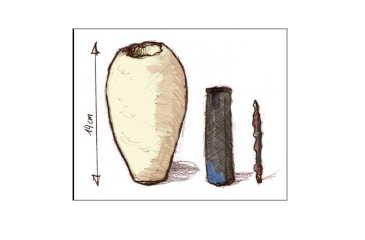- Series:Archaeology, History, Transcript English
While evolutionary historians refer to the ages of humanity before the birth of Christ with terms like the Stone, Bronze and Iron ages, it seems that human metal working technology was much more sophisticated than these names suggest. And that fits with what Genesis 4 tells us about human history.

An example of this was reported in the April 1957 issue of Science Digest. In the 1930s, archaeologists were digging in a small ruin on the outskirts of Baghdad when they uncovered something that looked very much like a modern dry cell battery. The object was analyzed, and a model was built by an engineer at General Electric’s High Voltage Laboratory.
The device turned out to be a wet cell battery that packed enough power to gold plate jewelry – history’s first recorded industrial use of electricity. The battery was built and used by Baghdad silversmiths from 250 224 B.C. It was about the size of two modern flashlight batteries and was made of materials similar to those in use today and common in the ancient world, including copper and 60/40 tin lead alloy solder.
These discoveries make it nearly impossible to dismiss the early chapters of Genesis as mythical. The picture they present of a creative and intelligent humanity rings true. And the Bible’s message of humanity’s need for salvation in Jesus Christ rings true as well.
Genesis 4:22a
“And Zillah, she also bare Tubalcain, an instructer of every artificer in brass and iron…”
Prayer: Lord, in trying to escape from You, man pictures himself as a well-advanced animal and nothing more. I am surrounded by people who think that this is scientific fact. Help me to be a witness to the truth revealed in Your Word so that those who have been misled may be led to Christ. In His Name. Amen.
Notes: Illustration: Drawing of Baghdad battery parts by Ironie CC BY SA 2.5
© 2024 Creation Moments. All rights reserved.
